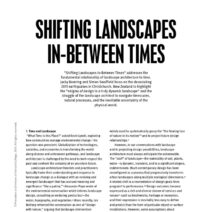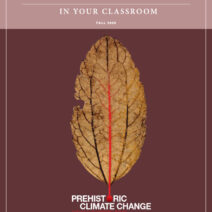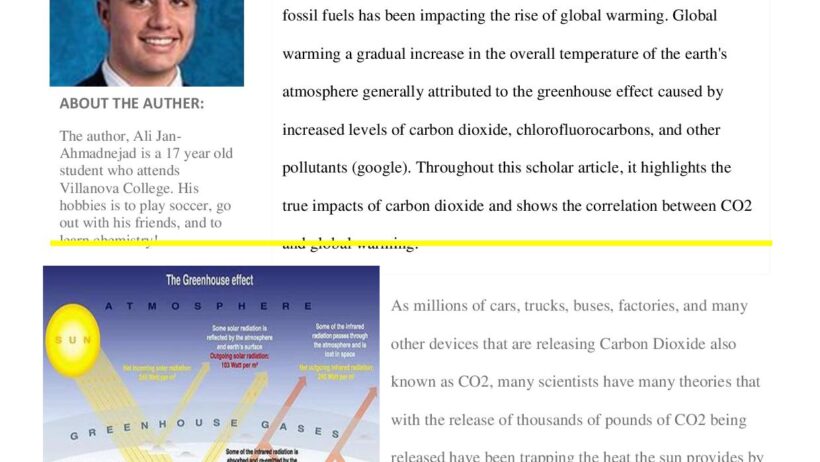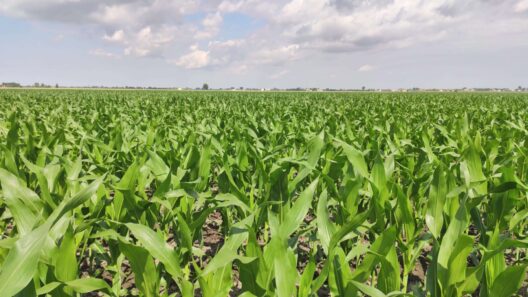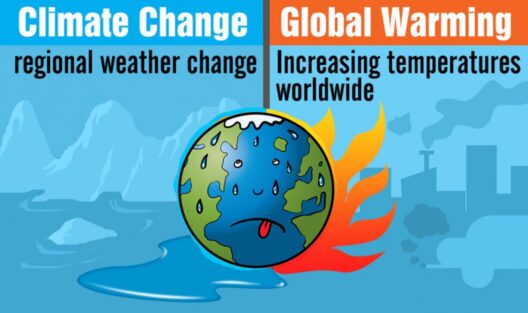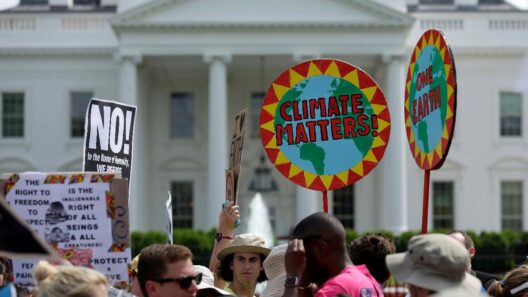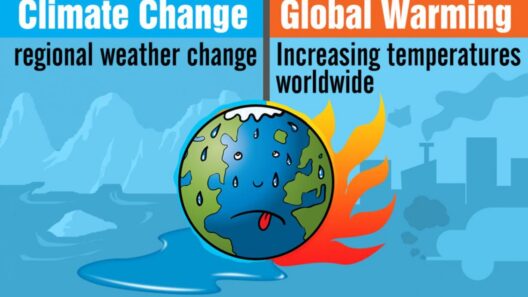In the intricate tapestry of Earth’s climate system, carbon dioxide (CO2) emerges as a potent thread—both a vital lifeline and a formidable adversary. As industrial progress burgeons, the delicate balance of gases enveloping our planet is increasingly disrupted, resulting in heightened CO2 levels. This narrative examines the profound connection between elevated carbon dioxide concentrations and global warming, elucidating the pathways leading to climatic upheaval.
Understanding how carbon dioxide plays a pivotal role in temperature regulation begins with grasping its innate characteristics as a greenhouse gas. Picture a greenhouse: sunlight penetrates the glass, warming the interior while the heat struggles to escape. CO2 acts similarly, trapping solar energy within the Earth’s atmosphere, creating a thermal blanket that maintains habitable conditions. In this delicate equilibrium, nature has orchestrated a miraculous dance—balancing incoming radiation with outgoing warmth.
However, as human activities proliferate, predominantly through combustion of fossil fuels, deforestation, and industrial processes, the concentration of CO2 has surged alarmingly. Each gallon of gasoline burned, each tree felled, and each factory emission swells the atmospheric CO2 levels, raising the stakes on our planet’s thermostat. The term ‘anthropogenic warming’ encapsulates this phenomenon, highlighting the human fingerprints on climate change.
The intrinsic irony here lies in the duality of carbon dioxide—it is both a facilitator of life and a contributor to destruction. Plants, for instance, rely on CO2 for photosynthesis, the process that underpins the very essence of terrestrial life. Yet, beyond a certain threshold, this essential gas becomes a harbinger of chaos. This conundrum presents a poignant metaphor: carbon dioxide is akin to a symphony conductor, crucial to harmony, yet, when unchecked, can lead to cacophony that drowns the very melodies it nurtured.
As CO2 levels rise, so does the average global temperature—the phenomenon known as the greenhouse effect. The intricate interplay of sunlight and infrared radiation shaped by CO2 is accelerating climate change at an alarming rate. Scientific consensus underscores that a rise of just a few degrees Celsius can unleash a cascade of irreversible consequences—melting ice caps, rising sea levels, and extreme weather events. The once predictable patterns of nature morph into unpredictable and volatile extremes.
The ramifications of escalating temperatures are not mere abstractions; they manifest in tangible ways. Consider the iconography of polar bears precariously perched on shrinking icebergs—a poignant representation of habitat loss. As glaciers recede, they melt into a rising sea; coastal cities face an existential threat. Urban landscapes, where concrete and steel reflect heat, exacerbate the effects of climate change. The ripple effects cut across ecosystems, human health, and food security, weaving a grim narrative that affects every inhabitant of this planet.
Moreover, bicarbonate systems within oceans act as natural buffers against acidification. Increased CO2 absorption leads to elevated bicarbonate levels, shifting ocean pH levels and impacting marine life. Coral reefs, often termed ‘the rainforests of the sea,’ exemplify the marine sensitivity to rising CO2. As coral bleaching escalates, entire reef ecosystems and the myriad species that rely on them teeter on the brink of collapse, mirroring the fragility of our interconnected existence.
Although the narrative of human-induced climate change can seem daunting, it also opens the door to transformation. Technological innovations hold promise for mitigating carbon footprints through renewable energy sources, energy efficiency, and carbon capture and storage (CCS). Each advancement serves as a beacon of hope, illuminating the path toward a more sustainable future. The metaphor of the phoenix rising from the ashes rings true here—though we face significant challenges, the potential for regeneration and reclamation remains profoundly encouraging.
In this burgeoning consciousness about the implications of elevated CO2 levels, collective action manifests in global agreements like the Paris Accord. Nations rally in a concerted effort to cap temperature increases and reduce greenhouse gas emissions. It is imperative, however, that these pledges translate into tangible actions—individually and collectively. Public discourse and grassroots movements invigorate the climate justice dialogue, urging sovereign entities and corporations alike to pivot towards sustainability.
The journey towards combating climate change necessitates an understanding that the solutions lie not only in technological advancements but also in altered mindsets. Embracing simplicity, reducing waste, and prioritizing ecological balance epitomize the behavioral shifts essential for a sustainable future. Reflections on personal consumption patterns reveal that every choice reverberates through the web of life, serving as both a statement of values and a catalyst for change. The choices we make today sow the seeds for tomorrow’s ecosystems.
Ultimately, navigating the complexities of elevated carbon dioxide levels requires commitment and awareness. The realization that human ingenuity can counteract adverse effects underscores the resilience of our species in the face of crisis. The prudent stewardship of our planet hinges on education, advocacy, and an unwavering resolve to restore balance and harmony.
In conclusion, the narrative of carbon dioxide and global warming is multifaceted, steeped in both science and symbolism. It calls for a collective awakening to the fragility of our environment and a shared responsibility to safeguard it for generations to come. Each step taken towards understanding and addressing the implications of increased CO2 will reverberate through time, creating a legacy that champions sustainability and resilience against the shifting climate tides.
